If you’re painting over wallpaper glue, doing this first will get you the perfect result you’re looking for!
I LOVE wallpaper and the beauty it adds to a room. What I don’t love is removing a previous owner’s dated wallpaper. Having moved multiple times, it’s something I’ve done a LOT of. And what I’ve found is that no matter how you remove wallpaper, some residual wallpaper glue is left behind on the walls. If you start painting over wallpaper glue that’s not fully removed, you’ll find that the paint reactivates the glue remnants and you’ll have a bumpy mess on your walls.
So what do you do? I’m going to share my step by step guide for success, from removing your wallpaper to putting on that final coat of paint! Let’s get to it… (post includes affiliate links – full disclosure statement available {here})
Removing Wallpaper
My favorite way to remove wallpaper is with a steamer – you can use a wallpaper steamer like {this highly rated one} or you can just use a handheld portable clothes steamer which is my favorite tool. I have {this handheld steamer} and like it because I can alternate easily between steaming on top of the paper and under it to get it off best:
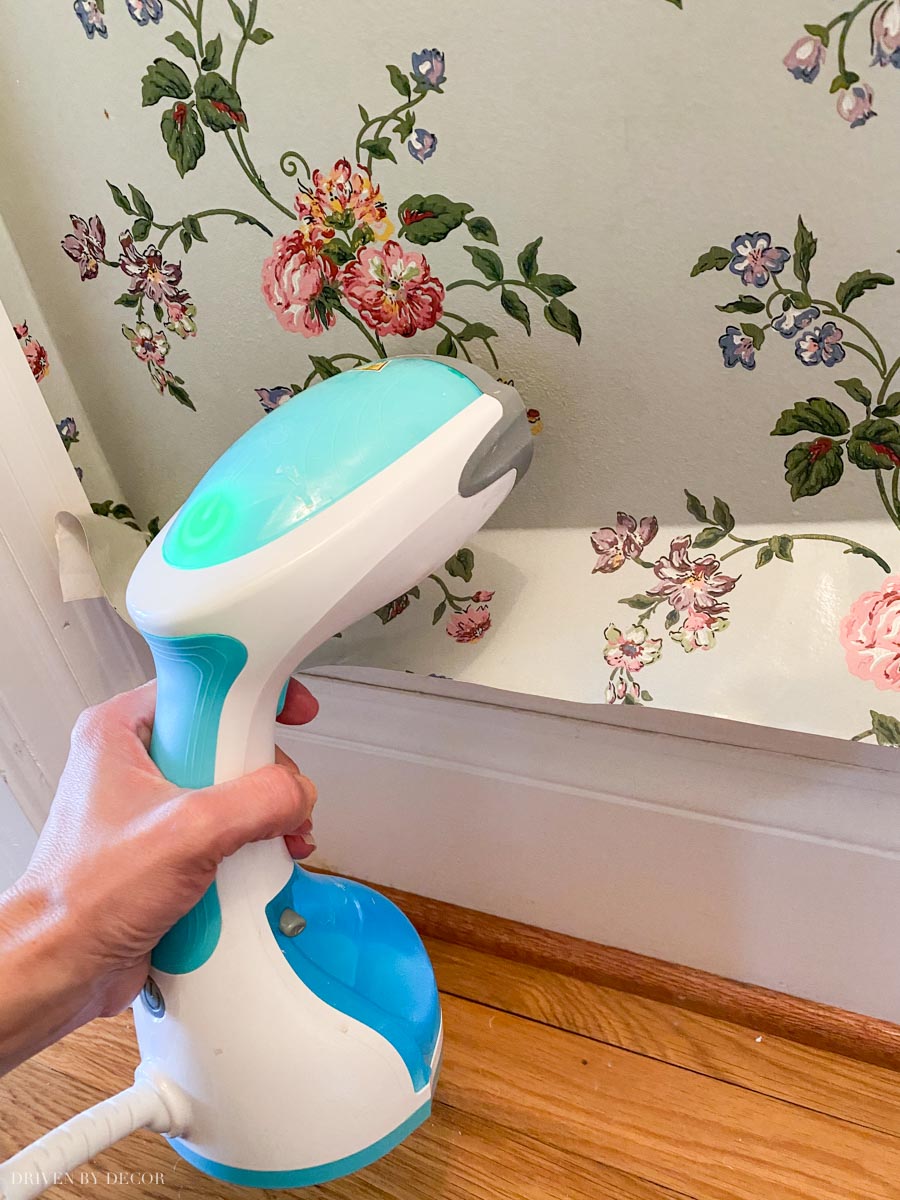
See my post on how to remove wallpaper for more details on using the steamer method of wallpaper removal plus other options for removing it. Once your old wallpaper is down, an important next step is to scrub your walls to remove as much glue as possible. Using a simple sponge and warm water will do the trick! If there is a lot of glue on the walls, skim a putty knife across the surface of your wall once you’ve dampened it to remove excess glue prior to scrubbing.
Sealing Your Walls
After you’ve scrubbed your walls, it might look like you’ve gotten all of the glue, but trust me, there’s some residual glue there. And if you start painting over wallpaper glue, it will reactivate the glue and leave you with little globs on your wall. What’s worked really well for me in dealing with the nightmarish residual wallpaper glue problem is this:
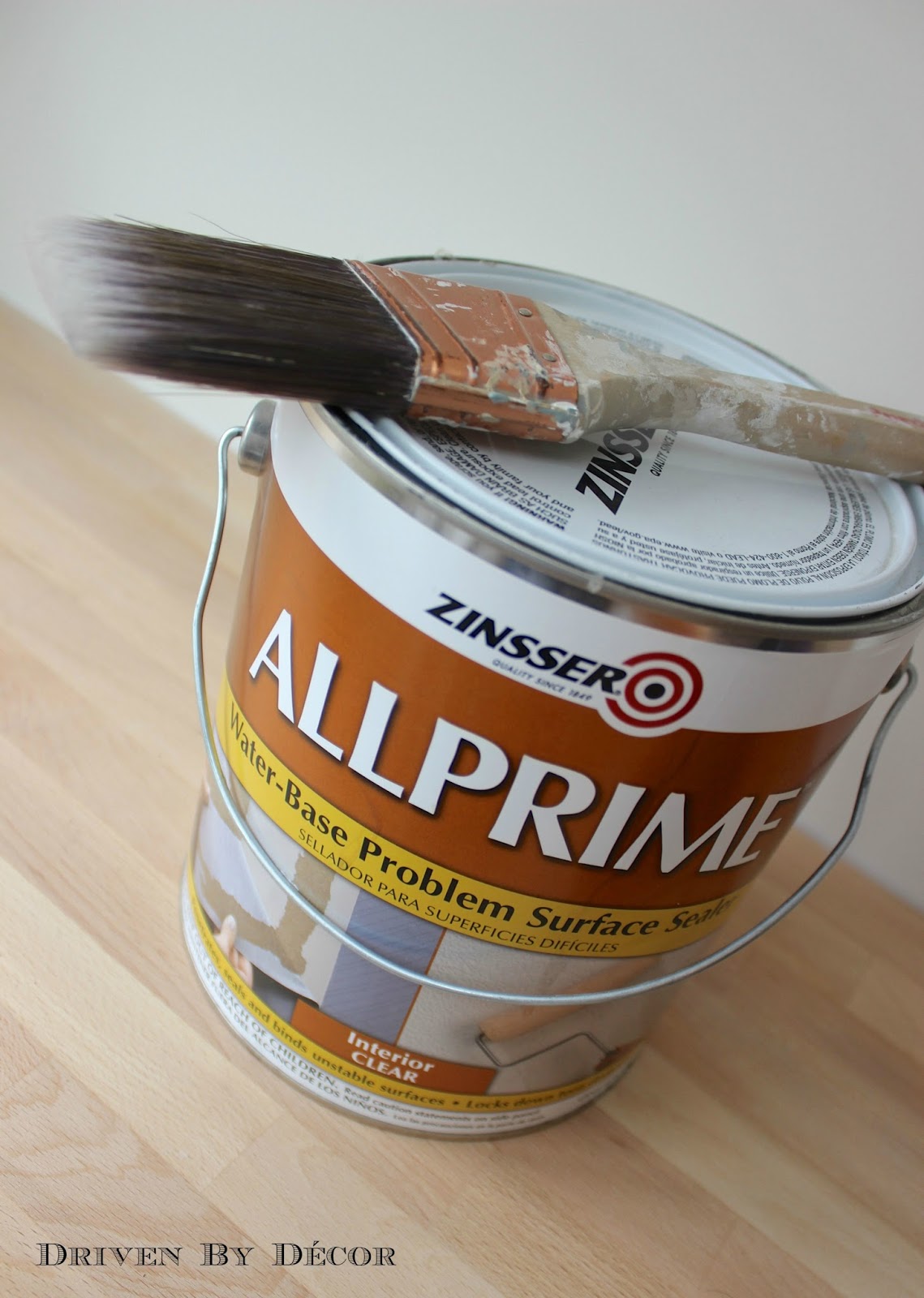
After scrubbing off the residual glue, I lightly sand the walls and then brush on a coat of Zinsser ALLPRIME Water-Base Problem Surface Sealer. (Note: Zinsser ALLPRIME is sold at Benjamin Moore dealers. It is the same product as Gardz Problem Surface Sealer which you can buy online {here}). These problem surface sealers do a few things. First of all, they seal in any residual glue so when you paint over it, you have a nice, smooth coat.
The other important thing that a problem surface sealer does is to seal peeling and cracked drywall. If your wallpaper was stubborn to remove, you may have a few spots cracked or torn spots like this where the bare drywall is exposed:
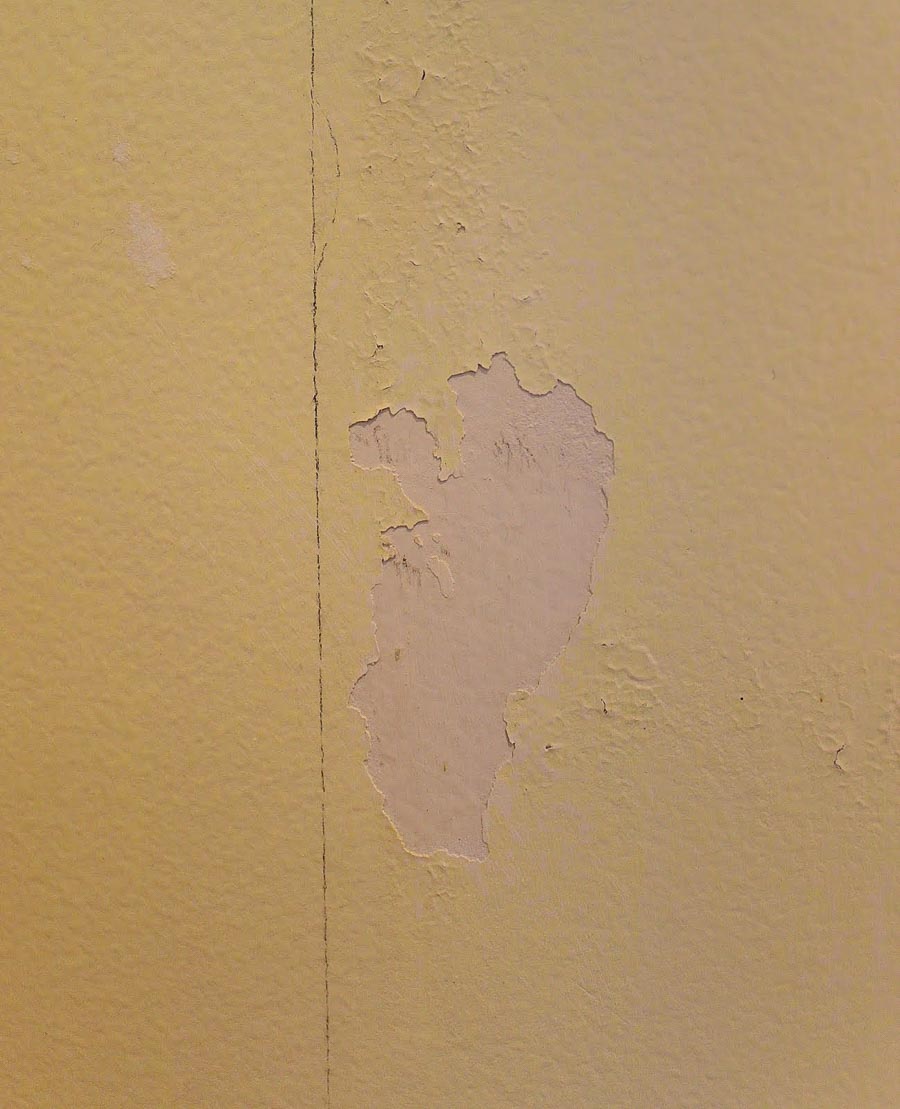
Once they’re covered with a problem surface sealer, these spots will be ready to patch and paint and will soon be unnoticeable.
Another way to seal the wallpaper glue is to use an oil-based primer. I much prefer one of the two problem surface sealers because (1) I don’t like working with any oil based products. You can’t clean your brushes, rollers, and other supplies with water and oil-based paint has a strong odor (usually with high VOCs). The other reason I prefer not to use an oil-based primer is that it takes a long time to dry. The problem surface sealers I recommend are fast drying, drying to the touch in just an hour.
Painting or Wallpapering Your Walls
They key to a beautiful paint job is all in the prep work. If you’ve used a sealer and patched any cracks or divots, you’ve set yourself up for success! See my post on how to paint a room for a list of the tools you’ll need to get your paint job done plus a step by step tutorial. What if you’re taking wallpaper down and then putting new wallpaper up? See my post on wallpaper installation for ten helpful tips for hanging your own wallpaper.
While it’s a lot of work, it’s definitely worth it in the end! In our previous home we took down wallpaper in room after room, including this dated floral wallpaper that was in the kitchen:
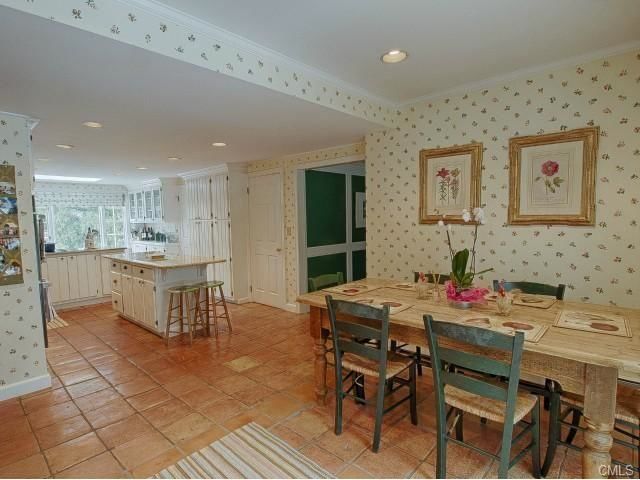
This is that same space after we remodeled our kitchen (and I took all of the wallpaper down and repainted with Benjamin Moore Cloud White):
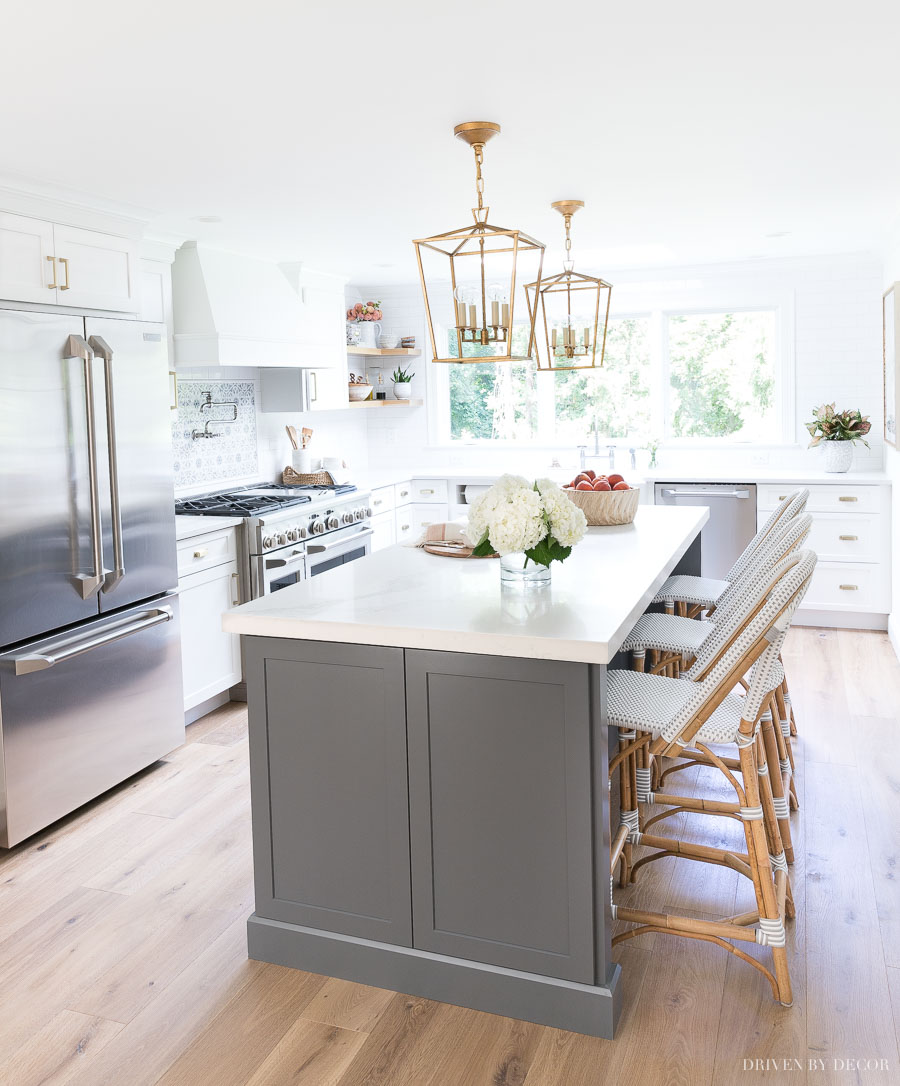
For lots more details, pics, and sources check out my post on our kitchen remodel “before” and “after”. And you can tour the rest of our Connecticut home {here}. Good luck with your project!




